What is deforestation? Unless you’re an ecologist, you probably don’t spend a lot of time worrying about the fate of the world’s forests, but you probably also don’t realize just how fast the forests on Earth are disappearing.
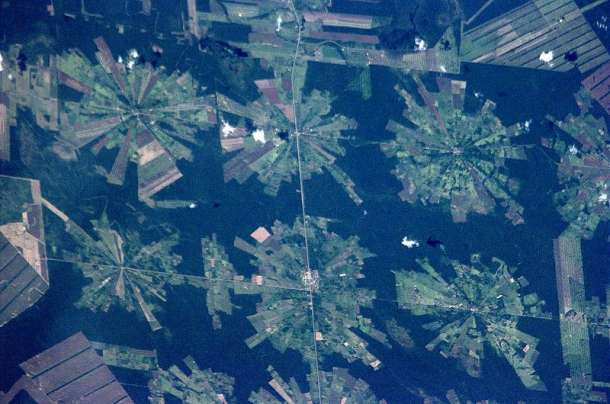
Satellite images of deforestation in Eastern Bolivia (Photo credit: NASA)
The rate at which trees are being felled for agriculture, manufacturing, and other reasons is quite astounding. The effects of deforestation are massive, adversely impacting biodiversity, the climate, and human life. Here are some facts about deforestation that should make you think twice before you decide to print something out you don’t need to or sign up for a physical newspaper.
1. Each year, forests as large as Panama are lost.
This statistic comes from National Geographic Magazine. According to National Geographic, forests still cover 30% of the land on earth. But each and every year, human activity costs us 29,157 square miles of forest (that’s the area of the country of Panama). If you do the math, at the current rate, it will take less than 700 years for all the forests in all the world to be totally destroyed.
2. In 100 years, there could be no more rainforests.
That number above, 700 years, was a total for the destruction of all forests on the planet, regardless of climate or type. But rainforest comprise a minority of the forests on Earth, and it could take as little as a century for these precious ecosystems to be destroyed.
Rainforest deforestation is a serious concern for the preservation of many species on earth since rainforests are among the most biodiverse ecologies in the world.
3. We’re losing an area of forest as large as 20 football fields every minute.

In the time it took you to read to this point, over 20 football fields (seen above) worth of forests have been wiped out. By the time you finish reading this article, an area of forests 100x greater than the football field shown above will have been destroyed. (Photo credit: Wikipedia)
Just think how much forest will have been cut down in the time it takes you to read this article. That’s pretty scary, isn’t it? Think about how many plants and animals live in area comprising the size of 20 football fields packed together. All those animals and plants are either killed or displaced by the deforestation.
4. Agriculture is the main cause of deforestation.

Devastating deforestation for an oil palm plantation in Sumatra, Indonesia
While industrial deforestation is a problem (paper production for example), the main cause of deforestation is agriculture. This includes the clearing of large swaths of land as well as small areas (slash and burn agriculture). Agriculture can also cause infertility in the land, preventing the growth of new forests as a result of overgrazing.
5. Deforestation is speeding up global warming.
Global warming is fueled by greenhouse gasses, which are absorbed by trees. As such, our forests help to regulate our climate and stabilize it, despite the pollutants we spread through the air. The more forests we lose, the less of a buffer we have, and the greater the impact of those unabsorbed greenhouse gasses.
6. Deforestation is often accomplished through burning.

Illegal "slash and burn" deforestation in Madagascar (Photo credit: Wikipedia)
According to the EPA, one of the main causes of air pollution for the entire planet is fires. Deforestation isn’t always achieved with axes and other cutting machinery. Forests are regularly burned down, which contaminates the atmosphere with nitrogen oxides, particulate matter, and other toxic pollutants.
7. You can’t replant an ecology.
While there are new tree plantations, there are a couple of reasons we cannot rely 100% on them to replace our forests. Firstly, we don’t have nearly enough of them. Secondly, they are simply plantations of trees. Trees, by themselves, do not comprise a forest, which is a complex ecology full of interactions by numerous plants and animals, each with their own unique biological niches and contributions. You can’t plant a fresh ecology out of a seed bag.
8. More than half of the timber and paper in the world are used up by just 22% of the population.
This fact is according to the Rainforest Action Network, a nonprofit group. Most of the people who are using up the resources are living in the United States, Europe and Japan. While the U.S. only contains about 5% of the total population in the world, it consumes a third of the paper on the planet.
9. Up to 28,000 species may go extinct due to deforestation in the next quarter century.
There is a lot of confusion and disinformation regarding the rate of extinction caused by deforestation, simply because it is so hard to actually accurately estimate. Many species are still undiscovered. It is a known fact however that rainforests contain the highest levels of biodiversity in the world. The statistic above is an extrapolation by researcher W.V. Reid at Columbia University based on current measurable statistics. Without a biodiverse world, life will be unable to thrive. Interdependency is a basic fact of life on earth. Diversity leads to unique adaptations and evolution, and also allows organisms to rely on each other to survive.
10. Without trees, human life would not survive.
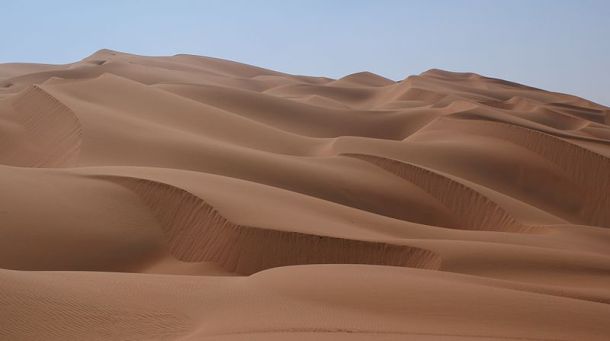
Arabian desert
Because of the amount of carbon contained inside the trees on earth, the earth is able to maintain a stable atmospheric composition and climate. Right now, only half of the forests on earth have been destroyed, and already the rate of climate change has accelerated. If the rest of the trees are destroyed, there will be nothing holding back that carbon, and the Earth will become uninhabitable. This is perhaps the most sobering of all deforestation facts.
What Can You Do?
Most deforestation is agricultural, and it’s hard to do much about that (unless you’re a farmer). One thing you can do is to purchase your produce from farmers who engage in sustainable agricultural practices. You can also cut back on your usage of paper products - get rid of your paper newspaper and use the internet for your news each day. Start buying eBooks.
You can also take a stand politically on issues of deforestation, and demand higher levels of regulation from your national government. In some countries, serious efforts are taken toward preservation. Did you know three quarters of Costa Rica is protected land? Ask your government to create more parks and preserves, give to nonprofits who support your cause, and share your enthusiasm for nature with others in your life.
author: Editorial Staff categories:
- Environment date: 2013-06-03T20:40:18Z guid: https://curiosityaroused.com/?p=766 id: 766 thumbnail: wp-content/uploads/vw-factory-420x419.jpg title: The 10 Worst Modern Causes of Air Pollution url: /environment/the-10-worst-modern-causes-of-air-pollution/
Air pollution is a major problem in today’s world. Many of us spend every day of our lives breathing in smog without even thinking of the damage it is doing not only to our lungs, but also to the planet. Air pollutants contribute to the rise of global warming, a long-term change in the climate of the planet which will ultimately be harmful, maybe even detrimental, to life on earth.
The US Environmental Protection Agency (EPA) keeps track of six different pollutants: carbon monoxide, lead, nitrogen oxides, volatile organic compounds, particular matter and sulfur dioxide. But what are the 10 worst modern causes of air pollution according to EPA data?
1. Automobile Emissions
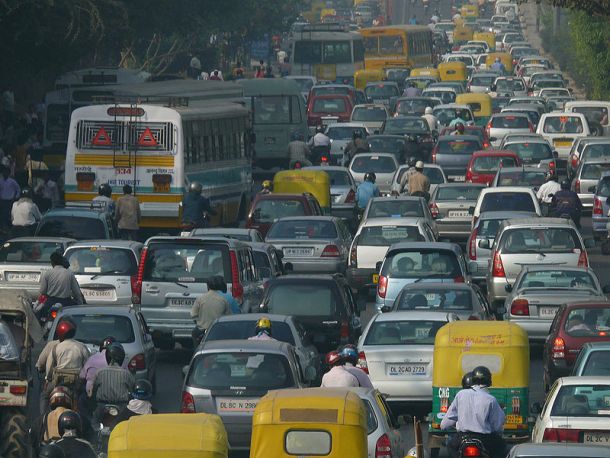
Rush hour in New Delhi (Photo credit: Wikipedia)
What can you do about it? Use public transportation when you can, get a smog check on your vehicle, even if you don’t have to, and avoid driving when you don’t need to. You can also consider upgrading to a hybrid or electric vehicle, which can save you money on gasoline and also protect the environment.
2. Fuel Combustion

Combustion engine (Photo credit: Wikipedia)
3. Dust

(Photo credit: nirvana168 | Flickr)
4. Industrial Processes
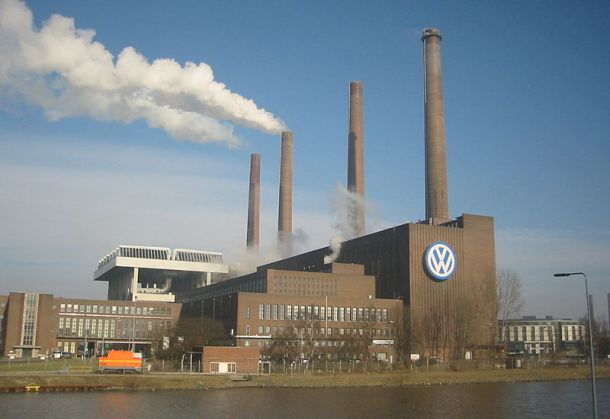
VW Factory (Photo credit: Wikipedia)
5. Solvent Use
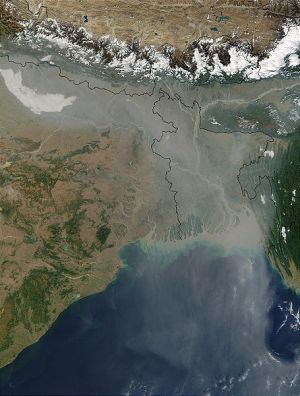
Aerosol pollution over Northern India and Bangladesh (Photo credit: Wikipedia)
6. Gasoline Terminals, Stations, and Gas Cooking
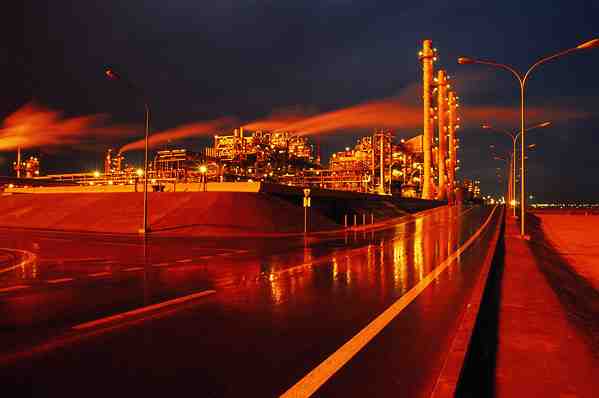
Petroleum refineries (Photo credit: Wikipedia)
7. Fires
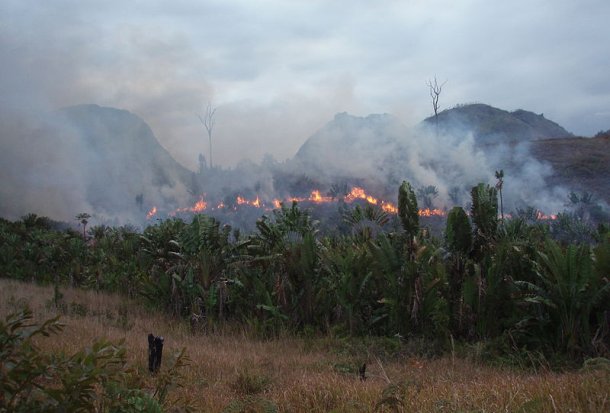
Slash and burn agriculture (Photo credit: Wikipedia)
Fires are a common source for most of the pollutants the EPA tracks, especially particulate matter. While many fires are natural and play a role in forest ecology, others are set deliberately by arsonists or slash and burn agricultural practices. These man-made fires not only destroy wildlife and contribute to deforestation, but also contribute to air pollution on the planet.
8. Agriculture

Devastating deforestation for an oil palm plantation in Sumatra, Indonesia
9. Waste Disposal
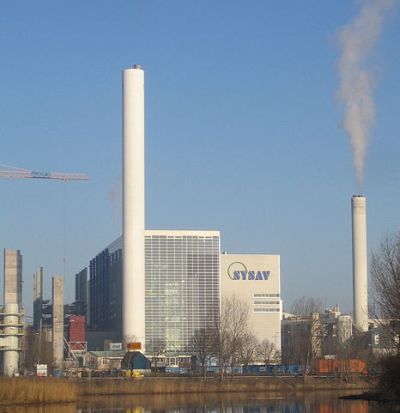
SYSAV waste incineration plant in Malmo, Sweden. This plant incinerates 25 metric tons of household waste per hour. (Photo credit: Wikipedia)
10. Radioactive Waste

A container of nuclear waste being transported in Nevada - nuclear waste transportation and disposal is one of the major environmental hazards of Nuclear power (Photo credit: Wikipedia)
single radioactive disaster can cause widespread contamination. Following the disaster, an area comprising a 20 km radius around the plant was evacuated due to concerns of radioactive gasses in the atmosphere. Food sales in the area were banned. While these measures were temporary and the situation is largely under control now, radiation is still leaking from the plant today. Contamination from the disaster is likely to cause a number of severe health problems for local residents in the coming years. More than a third of the children in Fukushima now have abnormal growths in their thyroid glands.
Chernobyl, the most famous nuclear disaster, released so much radiation that tours of the area have only been permitted by the Emergency Situations Ministry of Ukraine since 2011. Radioactive pollution may not be the most common type of atmospheric pollution (otherwise we’d be in a lot of trouble), but it certainly is among the most destructive, which is why nuclear power plants and devices are considered to be so hazardous by so many scientists and members of the general public.
What Can You Do?
As human beings in the modern world, we tend to have a rather shortsighted view of life, but the products of our comfortable, convenient lives have long-term environmental consequences. If we expect the planet to be a livable place for generations to come, we will need to learn how to be long-term planners again. How can you do your part?
Consider upgrading to an energy efficient vehicle and going green with solar power in your home. Take care of the vehicles you do have so they run efficiently and produce as little environmental toxicity as possible. Better yet, get rid of your vehicle altogether and consider biking, car-pooling, and taking public transport.
And if you live in the city and have forgotten what fresh air feels like, consider taking a trip to the country to remember. When you come back home, do your part to cut back on the smog in the city and hold onto that dream of fresher, cleaner air.